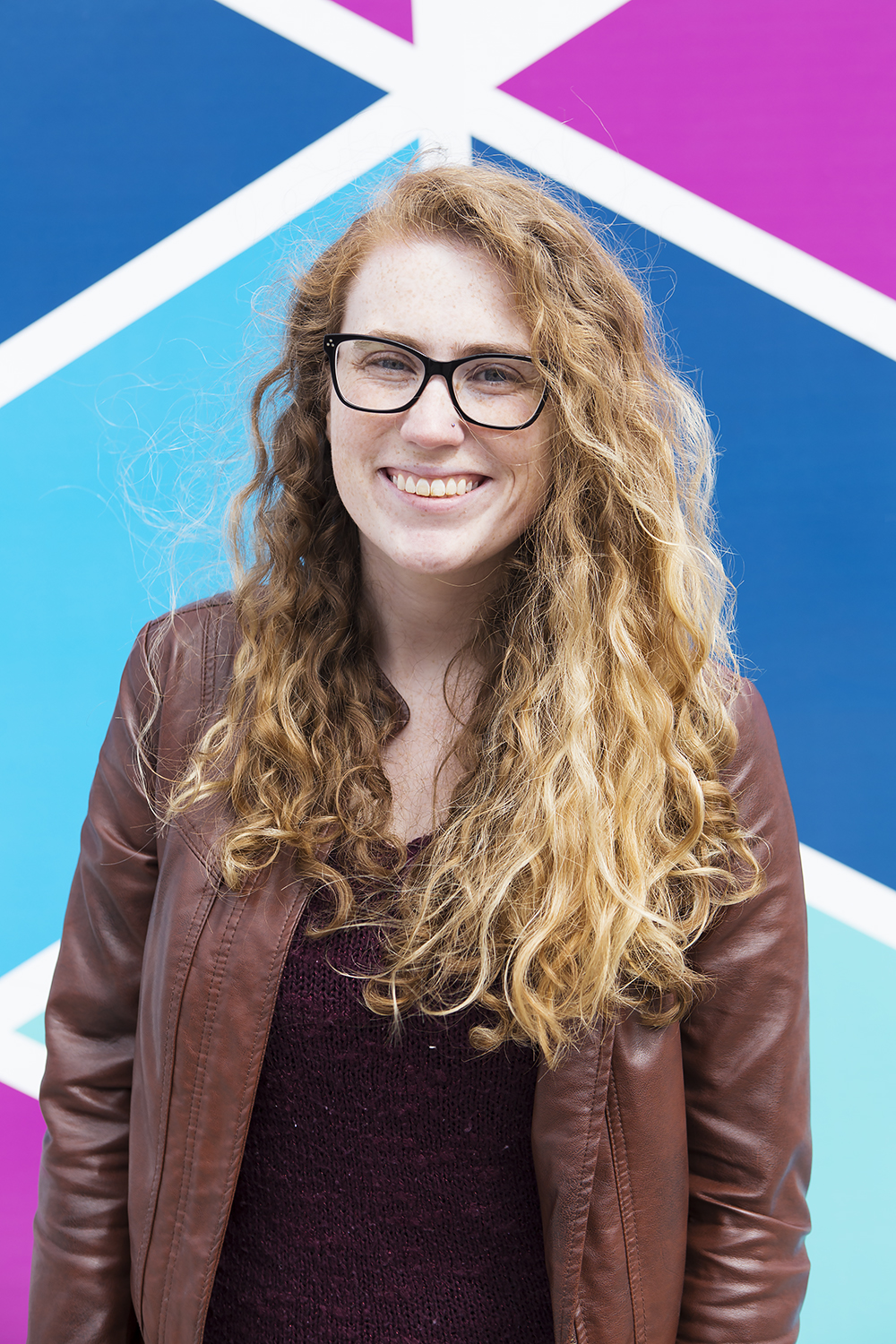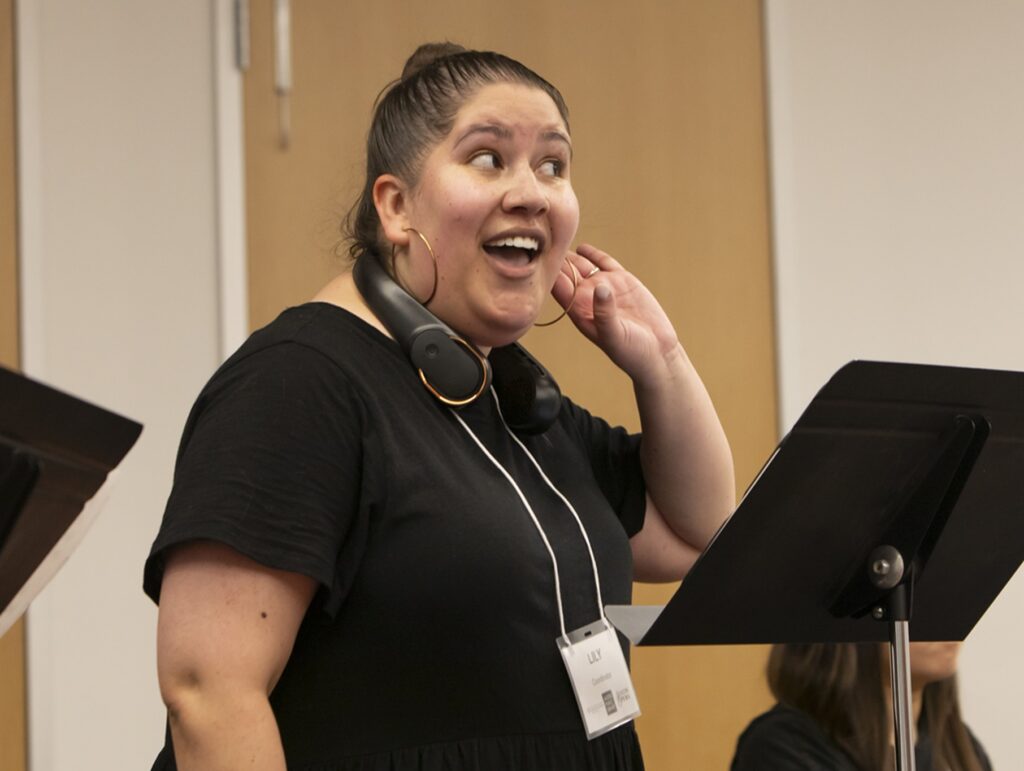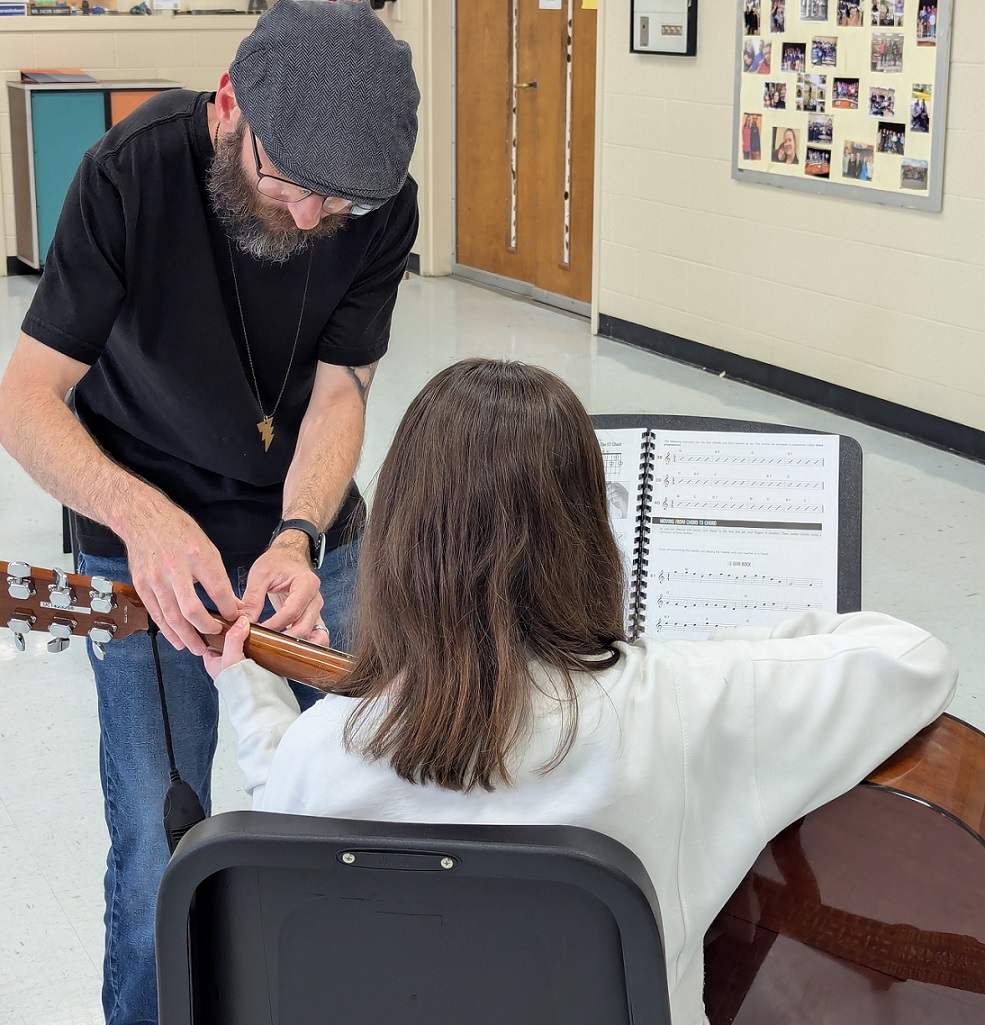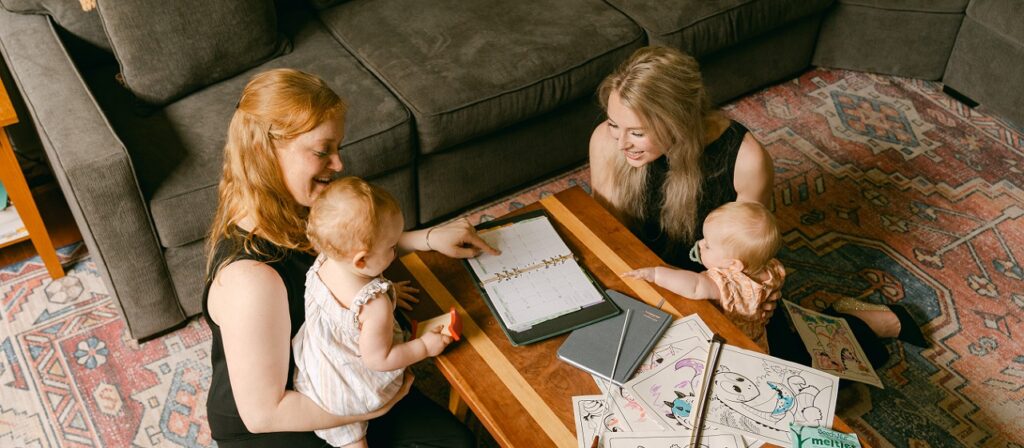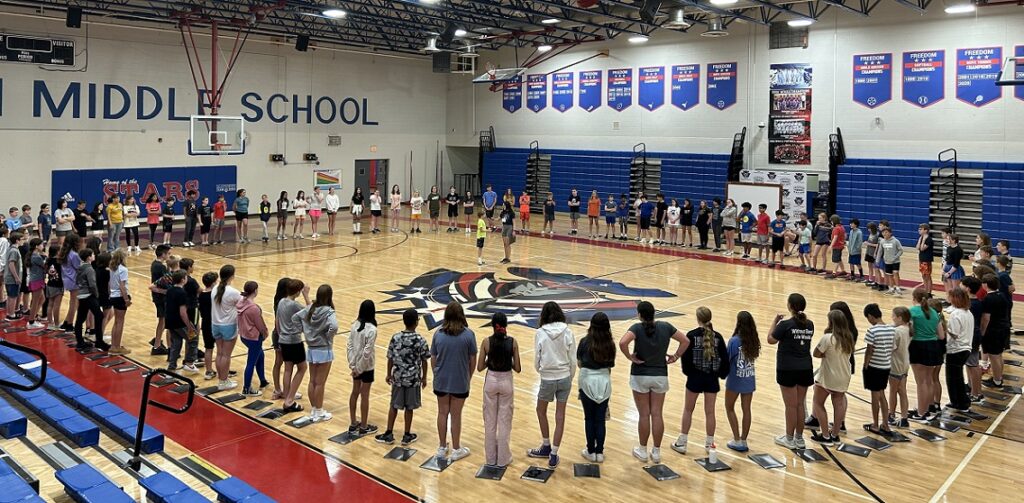Tagged Under:
The Power of Problem-Solving
Making modern music bridged COVID learning to a new co-curricular digital music program at a Pennsylvania school district.
Above all else, the music students in the Abington School District in Pennsylvania, love to perform, wherever and whenever they can. When COVID lockdowns threatened their performance opportunities, music industry teacher Kevin Longwill found a solution that grew into even bigger and better performance opportunities than anyone could have imagined.
Longwill, who teaches music classes for Abington’s middle and high schools, originally taught students digital recording as a way to keep them engaged in music while school was virtual in 2020. During the years since, digital music instruction has grown into a program called Modern Music Makers, also known as M3. This co-curricular music program for middle and high school students has four total divisions: management, media, marketing and mentorship. Through M3, students develop a variety of skills in performance, songwriting, technical production, show development and other facets of the professional music industry.
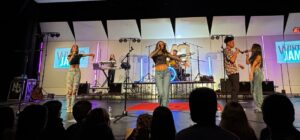
A Process of Adaptation
When COVID lockdowns began in the spring of 2020, Longwill noticed the impact virtual schooling had on his music students. “A lot of our kids were losing one of the things that makes music fun — playing music with their friends,” he says.
After watching videos of virtual music ensemble performances, Longwill was inspired “to bring back the ensemble experience, whether or not you’re in the same room.”
Longwill then approached the Abington administrators, explained he had a background working in technology, and asked if he could start teaching his students how to record. “Not only did this provide the opportunity for kids to make music together again, but it also would teach them a new form of digital literacy,” Longwill explains.
After receiving administrative approval, Longwill began a project where each student recorded a part of a song, then passed the file onto another student, who would then add their own recording to the mix, and then continue down the chain. During that first year, 25 students participated in the collaborative recording. The following year, that number grew to 60.
Longwill used this opportunity to teach students how to work with a digital audio workstation, or DAW, and give them the basics of editing individual tracks.
A second round of adaptation was necessary when school came back to being in person full-time. Some students started to lose interest in the recording project because they no longer needed to record their parts in order to perform together. Longwill, who was recognized as a 2024 Yamaha “40 Under 40” music educator, still saw the benefit to music technology, so he decided to pivot the program’s focus: The program evolved to incorporate live performance and the production skills which align to its development, while also retaining the original focus of create music in digital platforms.

There’s More to Music
During the past four years, these digital music classes became the M3 program, which has expanded to include different areas of music industry experience — from a show’s lighting, video, and sound design, to the logistics behind booking your own gigs as a musician. Additionally, the program continues to help students develop their individual and small group projects through recording, mixing and editing, and ultimately distribution through their record label, M3 Records.
Longwill describes M3 as a co-curricular program, meaning that certain pieces are offered as elective classes students can take for a grade, while the program also offers pieces outside of school. Many students participate in both.
Curricular pieces of the program include four music technology classes: Music Tech 1, Music Tech 2, Honors Music Technology 3 and a class called AMPD, which stands for Advanced Music Production and Design.

Longwill describes the AMPD class as intense, with students producing work equivalent to a thesis. “It’s like a capstone class,” he says. “We really dig deep into music technology and literacy plus songwriting, the music business and preparing students for the real world.”
Even students who aren’t interested in music performance can participate in M3, which includes instruction on the multimedia parts behind a concert. Longwill cites big stadium concerts as his inspiration; one of his goals is to teach students how to put on an entire show, operating every element from the lights to on-stage visual and audio effects.
School music programs have the potential to be as varied as athletic departments. Longwill compares the kids in his M3 program to student athletes: “You can be on the basketball team, the soccer team, the tennis team. There are so many options,” he says. “But with school music programs, there’s band, chorus or orchestra — it’s very much one big group.”
He explains that with M3, “There’s a huge portion of kids who like playing guitar or making beats. There are even kids who don’t want to do any of these things but are interested in being a part of the show or the studio.”
Longwill’s goal is to make sure all these students are equally involved with the music department. “Everyone can be part of our school music community,” he says. “Everyone is welcome to have a seat at the table.”
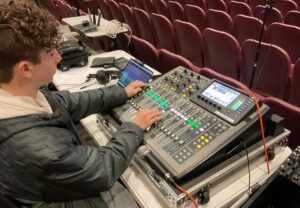
Learning Leadership
To prepare students for life after high school, the M3 program fosters skills that help ease students into more adult leadership positions. For example, some students have begun booking their own shows, both for ensembles they’ve formed with other M3 kids, and for their own solo performances. “We supervise them in doing that and provide them with whatever they need to be successful,” Longwill says.
Students also work at M3 fundraisers to help pay their own expenses, such as the cost of renting a performance facility. Longwill recalls that one of his student groups scheduled a performance at a local pizza spot. “Aside from just confirming the venue, they ran the whole thing themselves,” he says. “Once you start to develop these skills, you can further expand on them.”
Another student booked a performance at a local music hall with 150 seats, which she sold out. Longwill supervised the process, but the student took the lead in reserving the venue and finding other students to collaborate with as supplemental acts in her show.
Having different M3 teams — like marketing, media and mentorship — allows Longwill to play to each student’s strengths. “We have some kids who are super invested in social media,” he says. “Working on the marketing team gives them a chance to do something constructive with it, instead of doom-scrolling.”
M3’s mentorship program connects high school and middle school musicians in a mutually beneficial partnership. “If you’re a 6th-grade guitarist, and you have a senior coming down to work with you, you have someone to look up to,” Longwill says. “The high schooler can see that this is where they were four or five years ago, and then they can bring that focus back when they’re working with their peers.”
Giving high school students extra leadership roles has helped them improve focus during their own rehearsals. “If you’re the one running a rehearsal for someone else, and you see someone goofing off, you take things a little more seriously,” Longwill says.
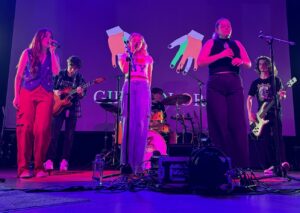
One Big Happy Concert
Whenever Longwill asks his students what kind of high school music experiences they want, the answer is always simple: They want as many opportunities to perform as possible.
Longwill has considered taking students on a Disney trip to perform, but he’s found that M3 students prefer more of a “touring lifestyle” — they want to attend events where they can perform every night.
Longwill noticed that a lack of performance opportunities was a widespread problem for teen musicians. “You can play in your school auditorium. You can play in front of your parents and friends,” he says. “But you’re not really going to get a chance to expand your audience.”
Similar to his approach during COVID, Longwill had to get innovative once again to solve this problem. His solution was the Modern Music Invitational, an event that brings multiple high schools together so students can perform for one another.
The Modern Music Invitational combines the nightly performances of a tour with daytime clinics and speaker sessions of an educational conference. Both Friday and Saturday nights give students opportunities to perform. On Friday night, students in solo and small groups can sign up to perform, while Saturday features masterclasses from professional musicians, studio engineers, and others actively engaged and working in the industry, while Saturday night features a massive band concert where all participating schools get to perform for one another.
The MMI, which takes place on the Abington High School campus, is in its second year. During the first year, eight schools participated, with a total of about 350 students. So far, the 2024 invitational has 15 schools registered, totaling more than 500 students. “At the conclusion of every show, I sit back awestruck at what the kids just did,” Longwill says.
Longwill hopes the M3 Invitational will continue expanding, even if it means looking for larger venues to host it in future years. “The invitational is a thousand percent the highlight of my career so far,” Longwill says. “Just to see that many kids playing for and with each other … that is as authentic as it can get with what they want to do.”









